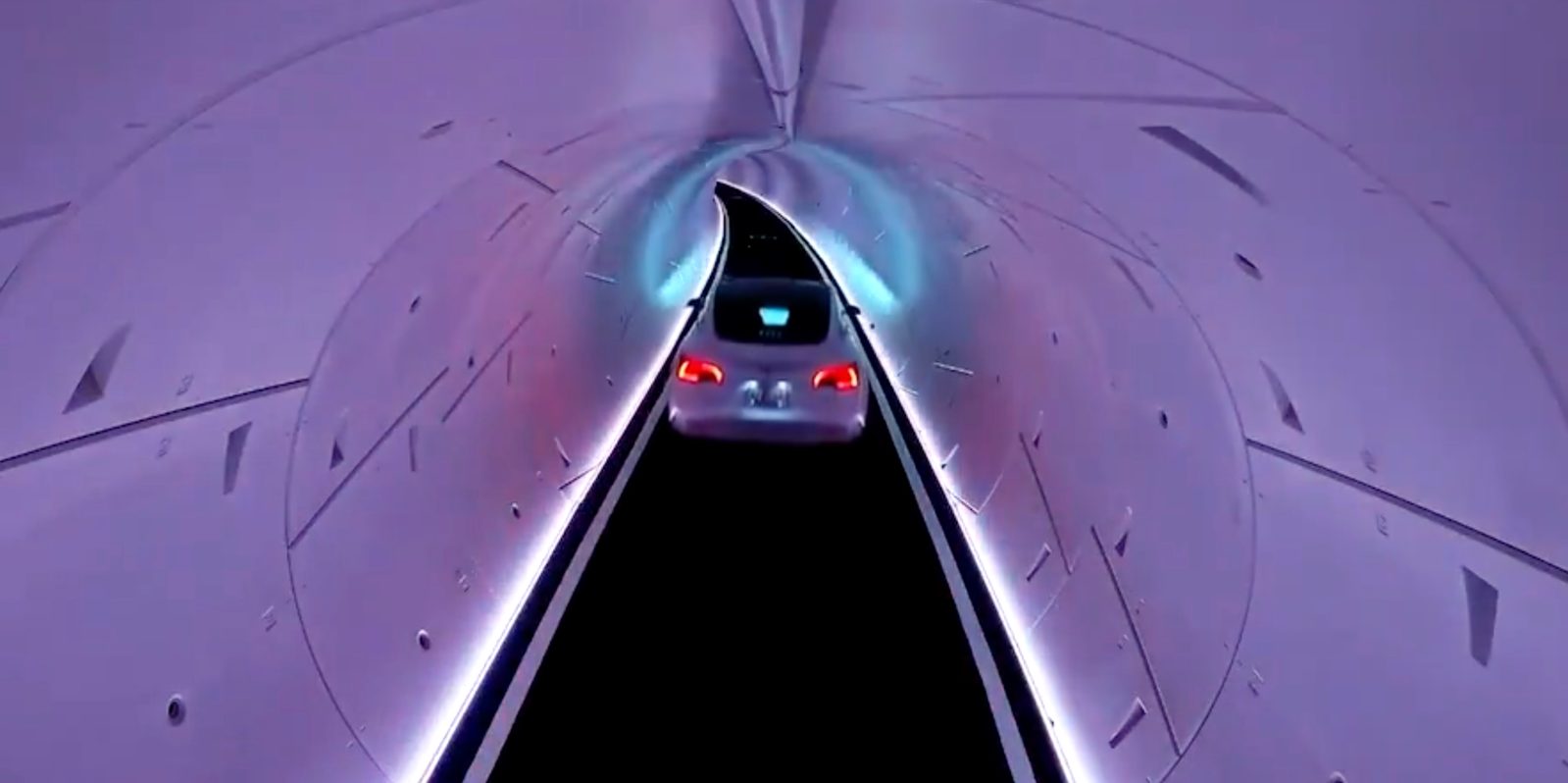
Tesla has reportedly begun testing self-driving features in the Boring Company’s single-lane tunnels in Las Vegas, but it is still “ways off,” according to the Las Vegas Convention Center, which owns the tunnels.
Yet, Elon Musk believes Tesla’s self-driving will cover half of the US population by the end of the year.
The Boring Company, a startup founded by Elon Musk, aims to construct single-lane tunnels beneath cities in an effort to alleviate traffic congestion.
In 2021, it began operating its first Loop, ~1.7 miles (2.7 km) of tunnels underneath the Las Vegas Convention Center (LVCC), with Tesla vehicles ferrying passengers between three stations around the convention center.
LVCC was the first to trust the Boring Company to deploy its ‘Loop’ and the service has been underwhelming so far, but The Boring Company did expand the network a bit in Las Vegas, connecting the LVCC Loop to a few hotels with new tunnels.
Elon Musk stated that the ultimate goal was for self-driving Tesla vehicles to transport people through these tunnels at high speeds.
Many people noted that a controlled environment with single-lane tunnels, devoid of other vehicles or pedestrians, would be the easiest environment to deploy self-driving technology. However, four years after launching the LVCC Loop, The Boring Company is still using Tesla vehicles with human chauffeurs.
Steve Hill, CEO of the Las Vegas Convention and Visitors Authority (LVCVA), confirmed to Fortune that The Boring Company started testing Tesla’s autonomous driving in the Vegas Loop, but he believes it is still “ways off”.
He shared some details about the testing so far:
Thus far, all of the initial testing has been done with the standard Full Self-Driving (FSD) software that consumers can get in their personal Tesla vehicles, and with a Boring Company safety operator in the driver’s seat, according to Hill, who awarded the Boring Company its first transportation contract and who has overseen all of Boring’s initial construction and tunneling in the broader County thus far. Hill said that Boring Company is operating the vehicles, but was unsure of Tesla’s exact role in the testing apart from furnishing the vehicles and the self-driving software. There have been no scrapes or accidents thus far, though safety drivers have “periodically” had to intervene and take control of the vehicles, Hill said.
Nonetheless, Hill believes that the loop will eventually become autonomous, but he is unsure when this will happen.
While they are still working on making self-driving work in those single-lane tunnels, CEO Elon Musk said that Tesla’s Robotaxi service will cover half of the US population by the end of the year.
Electrek’s Take
As I previously stated, there’s no way that Tesla could cover half of the US population with an actual Robotaxi service by the end of the year.
But the fact that it doesn’t actually operate any real Robotaxi service changes things.
In the Bay Area, Tesla claims to have launched its “Robotaxi”, but it is essentially using its Supervised Full Self-Driving (FSD) feature with Tesla employees supervising the vehicles from the driver’s seat.
This is basically the same thing as an Uber driver who has a Tesla with FSD.
Therefore, technically, Tesla could cover half of the US population by recruiting a few drivers in all 40 biggest metro markets in the US to drive around in Tesla vehicles with FSD and claim that its “Robotaxi” covers half of the US population.
It would be a ridiculous thing to do and only celebrated by the most cultish of Tesla fans, but at this point, I wouldn’t be shocked.
My personal opinion is that the right thing to do is to deliver on what you promised: unsupervised self-driving in consumer vehicles built since 2016 and the promises made to other customers, such as the Las Vegas Convention Center.
If your self-driving technology is not working in a single-lane tunnel without other road users, it will not work on surface streets.
FTC: We use income earning auto affiliate links. More.













